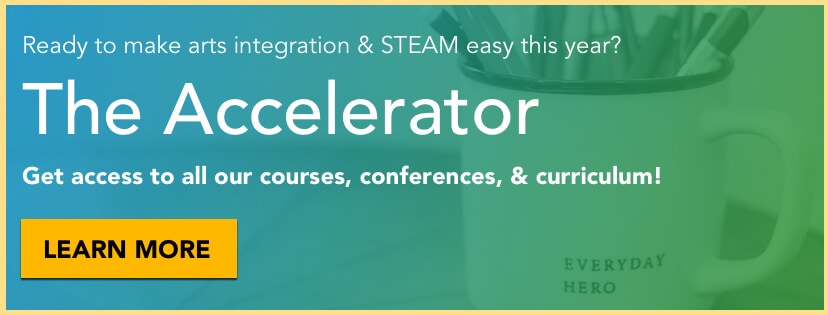Lesson Overview
Mini Musical Engineers
GRADES K-1 MUSIC AND ENGINEERING
All this month, our team is sharing ideas, tips and resources for integrating the arts in and through early childhood curriculum. This has been a request from SO many of you and for good reason: working with our “littles” isn’t as easy as just modifying a few curriculum elements. And when it comes to STEAM in early childhood classrooms, it’s easy to feel a little lost since many of the STEAM lesson for children and this concepts seem so BIG for such little people.
So today I’m sharing this great STEAM lesson for children, all about making musical engineers out of our pre-k and kindergarten students. This lesson takes advantage of the fact that our youngest students are inquisitive and tactile who enjoy playing as part of the learning process. But don’t mistake this lesson as “easy”: it’s challenging our students at their deepest levels.
How do we make design decisions? Provide an observation area with old musical instrument parts, pieces or recycled materials. Invite students to the observation carpet/table. Ask them to look through all of the objects. What do they see, feel, hear when they pick up each object?
Ask students what they think these items are from. Take as many ideas as they share. Then, explain that these items are actually broken instruments. Ask: what problem do we now have? Share that engineers identify problems and then seek out new ways to solve that problem. Today, the students will each become a musical engineer. Ask: Musical engineers, what could we possibly do with these items to solve the problem(s) we listed?
Lesson Process:
Step 1: Divide students into musical engineering teams. Each team will create a new instrument out of the materials found on the observation table. Each team can choose between 5-10 objects to create their instrument.
Step 2: Each team should think about what sound they want the instrument to make and how it should be played. They can draw their ideas and then begin to build their instrument using their selected objects. They can ONLY use the objects founds on the observation table.
Step 3: Each team can test out their musical instrument to see if it matches what they were looking to create (how it sounds and how it should be played). If adjustments are needed, make them in this stage. Teacher can provide feedback to each team.
Step 4: Teams present their finished instruments to the class and then all play their instruments together.
![]() Time Required:
Time Required:
30-45 minutes
![]() Materials List:
Materials List:
- At least 30-50 recycled or broken instrument pieces (ie: old orff instruments, bell clappers, tissue rolls, bolts, clips, etc)
- Sketch paper and pencils.
![]() Assessment:
Assessment:
Rubric.
😀 Instrument shows intentional design choices Students explain how the instrument solves the problem
😐 Instrument shows some design choices Students explain how the instrument is created
☹️ Instrument shows little/no design choices Students cannot explain their process for creation



